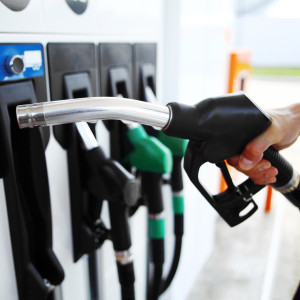Freedom of choice is one of the greatest things about being an American. White bread or wheat bread? Oklahoma State or OU? Republican or Democrat? Coke or Diet Coke?
But a federal rule has taken away our freedom to choose at a place many Americans visit every week—the gas pump. Created in 2005, the Renewable Fuel Standard (RFS) established the first renewable fuel volume mandate in the United States. The key word of course is —“mandate.” The RFS requires American energy producers to refine 35 billion gallons of ethanol-equivalent biofuels and one billion gallons of biomass-based diesel by 2022. Everyone has seen the terms “E10” and even “E15” to indicate percentage of ethanol in gasoline at service stations. In order to reach the ethanol blend target, refiners are forced to include escalating amounts of renewable fuels into gasoline each year, which means most stations cannot sell 100% gasoline. In layman’s terms, federal regulations on energy companies are blocking your freedom of choice at the gas pump.
As energy refiners were just beginning to deal with the 2005 mandates, the Energy Independence and Security Act (EISA) of 2007 further required them to increase the amount of ethanol they blend into gasoline. The EISA outlined gradual increases in the additive mandate in the near future—E15 could be the new E10 soon. This increase was predicated on the assumption Americans would consume more gasoline in the future. However, we didn’t. The mandate has created a new national challenge with the RFS, the “blend wall.”
The slow economy and more stringent requirements under Corporate Average Fuel Economy (CAFE) standards, a federal regulation dictating how many miles per gallon different classes of vehicles are required to attain, have actually reduced demand for gasoline in recent years. The result is that refiners are required to blend more renewables into less gasoline, which was never the intent of the RFS or EISA.
The increasing renewable mandate creates a major problem for automobile owners because after a certain point, ethanol can break down your car’s engine. In fact, many automakers will void warranties on vehicles if owners use gasoline with greater than 10% ethanol because they know the damaging effects ethanol can have on an engine. Consumers are then left on the hook to pay for damage caused by a misguided federal mandate.
There are additional issues with the mandate that are not as visible to consumers, though they unknowingly pay the price. EISA requires producers to use something called “cellulosic biofuel” to meet a certain portion of the renewable mandate. Cellulosic biofuel is derived from cellulose materials like switchgrass and woodchips. The problem with this mandate is cellulosic ethanol is simply not produced in quantities anywhere near large enough to meet the requirement.
The EISA, as written in 2007, required 1 billion gallons of cellulosic to be blended into the fuel supply. In a series of rulemakings the EPA has acknowledged this is flat-out unattainable . They first lowered the mandate to 14 million in the proposed rule for 2013 and again ratcheted it down to 6 million in the final rule. This level still turned out to be more than six times what was available.
On April 22, 2014, the EPA announced the cellulosic mandate for 2013 was reduced to 810,185 gallons from 1 billion gallons. Acknowledging market realities is a necessary step; however, reductions in the mandate are at the discretion of EPA every year. The energy industry cannot count on this reduction or be assured they will not be in violation of some impossible federal mandate. In the coming years, the cellulosic mandate will increase considerably. Short of an extreme increase in production, a continual increase in the mandate will only exacerbate the current problem and cost you more at the pump.
Oklahoma individuals, families and businesses are dependent on gasoline and properly functioning automobile engines in our everyday lives. As Oklahoma families continue to struggle to make ends meet, federal regulations that increase their monthly fuel and food costs are yet another unnecessary hurdle between them and the American dream. According to a study done by the economic consulting firm NERA, mandating E15 could increase the cost of gasoline by 30% by 2015 and increase cost of diesel by 300% by 2015. Because of the over-reliance on food-based ethanol as a renewable fuel, the RFS also has a negative impact on our food supply and security.
As refiners and automakers struggle to implement the burdensome regulations, consumers pay the price. I continue to see gas stations throughout the Fifth District of Oklahoma with signs advertising “No Ethanol,” proudly acknowledging their customer’s preference for pure gasoline. The lingering question is: how much longer will American consumers have the option to choose ethanol-free gasoline before we cede that freedom to the whim of federal regulators?
The Oversight Committee on which I serve continues to hold subcommittee hearings to discuss the RFS with Administration officials and energy refiners and producers. I will continue to work toward legislative action that helps facilitate a balance between our focus on a broad North American energy portfolio and scaling back excessive federal regulations that end up hurting families most.
Consumer choice works both ways. If consumers who prefer ethanol-based fuel want to purchase that fuel, they should be free to do so. If consumers want to preserve their vehicle’s engine and purchase 100% pure gasoline that keeps them from visiting the pump as frequently, they should have the freedom to do so as well. Protecting American consumer choice in all industries isn’t just a matter of policy preferences; it’s a matter of freedom.

